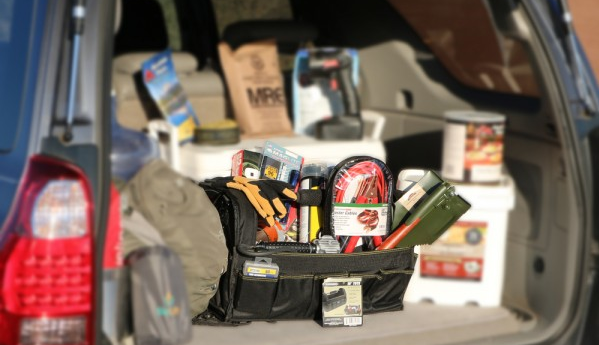Stock up on these 7 basic food items before SHTF
08/25/2021 / By Ramon Tomey

Food is one of the most important items people need following a major disaster. Unfortunately, it is often the first one to run out when people scramble to groceries. Thus, stocking up on key food items during abundant periods proves useful in times of short food supply. Here are seven basic food items to stock up on for the long term.
Rice
Rice is definitely a versatile and filling ingredient. Many meals can be made using cooked rice, and existing ones can be stretched by adding more. There are two kinds of rice sold on the market – white rice and brown rice. White rice has a shelf life of up to two years, while brown rice has a shorter shelf life of three to six months.
One good way to keep rice is by putting it in five-gallon buckets for long-term consumption, with additional rice kept in small containers. Refrigeration and freezing may also significantly extend the shelf life of rice.
Beans and canned meats
Beans and canned meats serve as quick, easy to prepare protein sources. They can be eaten alongside rice or turned into a chili dish. For canned meats and beans, the expiration or best before date serves as a guide to when they are still safe to consume. But for dried beans, they can be kept to a minimum of one or two years.
However, there are some things to keep in mind when storing dried beans for prolonged periods. Dried beans’ nutritional value will start diminishing after two to three years of storage, and all vitamins will be gone by the fifth year.
Peanut butter and fruit spreads
The classic peanut butter sandwich is undeniably a favorite as it is delicious, filling and packed with energy. However, peanut butter does not keep for long so it is not advisable to keep big jars of it. According to the United States Department of Agriculture (USDA), peanut butter can be kept unopened for six to nine months and only two to three months once opened.
Other spreads that pair well with peanut butter such as fruit jellies and jams have longer shelf lives. Fruit jellies and jams can last for up to six months at room temperature and up to a year when refrigerated.
Wheat and flour
White flour is one versatile ingredient to stock up as it can be made into breads, cakes, biscuits, cookies and other baked items. Unopened flour stored at room temperature can last up to one year, but its shelf life will decrease to eight months once opened. Storing opened flour inside a refrigerator will extend its shelf life up to a year.
Hard, white wheat boasts of an average shelf life of 10 to 12 years and can even be consumed up to three decades or more. However, storing hard white wheat is not advisable for families who do not have a grinder – manual, electric or otherwise – to turn it into flour.
Canned fruits and vegetables
While fresh fruits and vegetables are always the best option, their short shelf life means that stocking up on these for the long term is not exactly viable. The next best option would be to use the canned varieties that may be used in the same manner as the fresh counterparts. It is best to save the liquid in the can for extra water.
According to the USDA, low-acidity canned goods such as meats, corn, spinach, peas, carrots and pumpkin can be stored at room temperature for two to five years. Meanwhile, high-acidity canned goods such as citrus juices, berries, mixed fruits and tomato products have a shorter shelf life of 12 to 18 months.
Ready-to-eat sauces
Familiar dishes can be whipped up with ready-to-eat sauces in stock. Tomato-based ready-to-eat sauces are versatile and can be used for many dishes such as spaghetti. Combined with canned meat and vegetables, a hearty meal isn’t definitely out of the question.
Sauces that use tomatoes as their base such as spaghetti sauce, pizza sauce and salsas tend to have a shelf life of one year when left unopened. Once opened, however, they should be used as soon as possible due to their shorter shelf life of five to 10 days when refrigerated.
Dry pasta
Tomato-based sauces go perfectly well with pasta, and uncooked dry pasta is best for this purpose. Ideally, dry pastas are best removed from their boxes and stored in clear, airtight containers. As dry pasta is devoid of moisture, it will last long when stored at room temperature.
It is worth noting that the “best by” or “use by” date indicated in pasta boxes is not an expiration date. Rather, it is the best estimate of up how long will the dry pasta remain at utmost freshness.
Stocking up on these basic food items should be done over a period of time. It is best to purchase these items when they are sold at a discount. However, these food items should not simply be stockpiled and left unattended for long. They should also be rotated to avoid spoilage, with their respective shelf lives in mind.
Preparedness.news has more articles about stockpiling key food items when SHTF.
Sources include:
Tagged Under: basic food items, beans, canned fruits, canned meat, canned vegetables, dry pasta, flour, food stockpiling, food supply, fruit spreads, peanut butter, preparedness, prepper, prepping, ready to eat sauces, rice, survival, survivalist, wheat
RECENT NEWS & ARTICLES
COPYRIGHT © 2017 OFFGRID NEWS




















